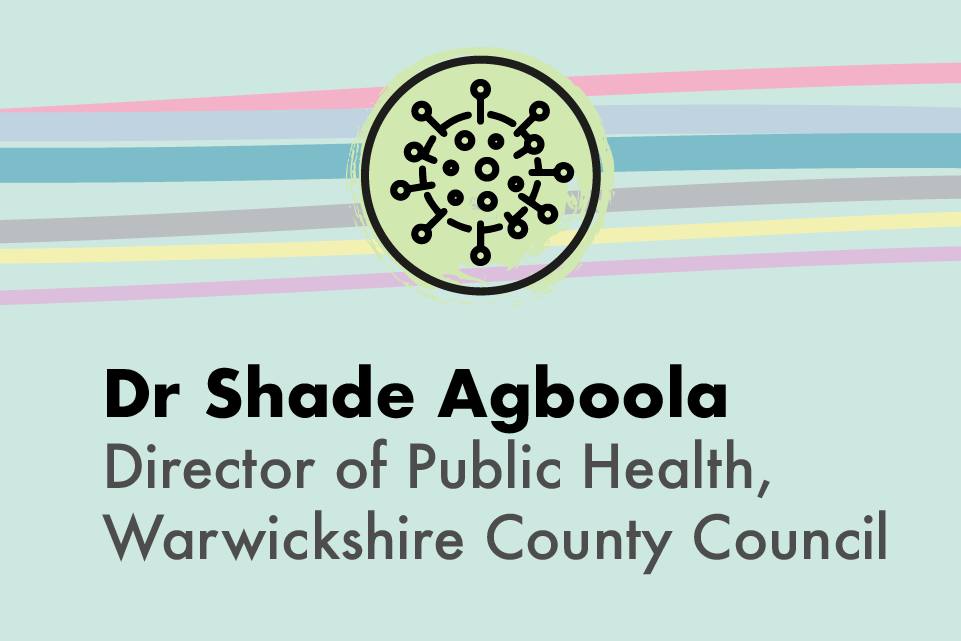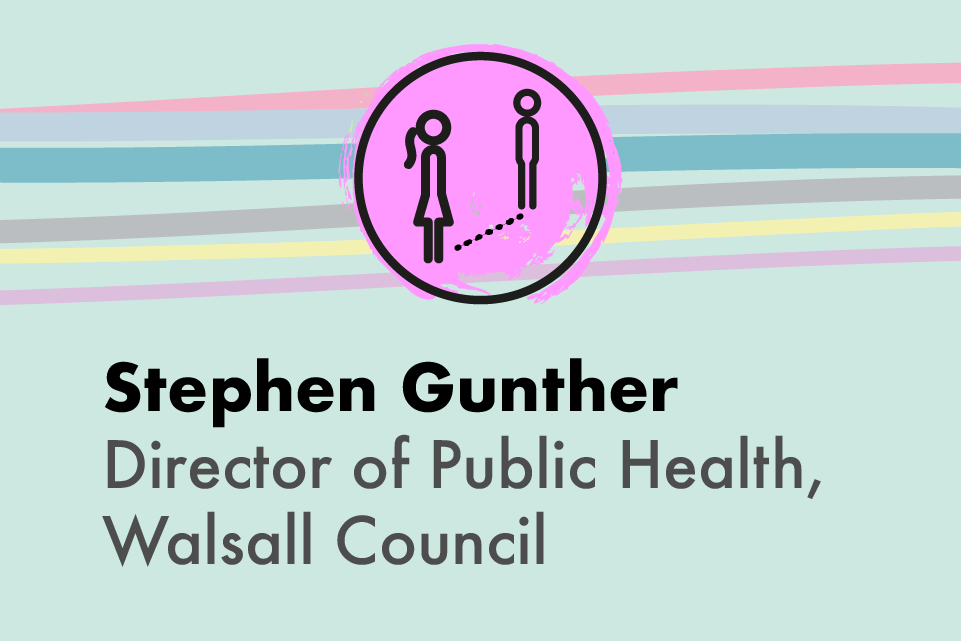Interview with Ian Ashworth, Director of Public Health, Cheshire West and Chester Council.
This is part of a series of interviews with public health directors, published on 12 August 2020.
Getting the public health response right in Cheshire West and Chester has not been easy. The area shares a border with Wales where lockdown restrictions have eased at a different pace to those in England.
And Director of Public Health Ian Ashworth now has to contend with the new restrictions on mixing of households that has been introduced in Greater Manchester and parts of East Lancashire, but not in Cheshire.
“We have residents who go across the border to Wales or into Greater Manchester for all sorts of reasons. And we have people from those areas coming into Cheshire. People in north Wales have been admitted to the Countess of Chester hospital throughout.
“People don’t think about arbitrary geographical lines and the virus certainly doesn’t respect them. But our location means there has been an added layer of complexity in everything we do. We ran a cross border exercise recently looking at what a local lockdown would be like and what the implications would be.
“It creates its own unique challenges. But that has been the case all along – whether it is interpreting guidance or getting hold of the right information and data.”
Mr Ashworth said a key principle that has been followed is transparency – an example of this is how the council has just started broadcasting its outbreak control management meetings online. “We want people to understand what’s going on, what the risks are. It is about getting things proportionate and managing risks in everything we do. We don’t want people to be complacent, but we want them to understand the context.”
Was lockdown eased too early in north west?
Mr Ashworth said another important element is the close relationship he has with the other directors of public health regionally. A key forum for that is the Champs Public Health Collaborative, known as Champs, which brings together nine public health teams across Cheshire and Merseyside.
“The network has been vital for professional and personal support. An example of this came at the start of June when the government published regional R rates for the first time. It showed the north west had gone above one.
“There has been so much focus on the R number. Really it should be part of a suite of data we look at, but at the time the public were very tuned into it. So, when it went above one it is was very concerning for the north west. Schools were just about to expand their opening and I had over 100 head teachers on a webinar wanting consistency in advice, when we had people in different parts of the north west questioning whether pupils should be going back or not.
“We recognised the public anxiety and that those mixed messages were not helping. Across Champs the directors of public health got together, we reviewed the available evidence, agreed it was right for schools to go back and did a joint statement. It helped ease some of the anxiety, but it was certainly a challenging moment.
“I think a lot of what we are seeing in the north west relates to the fact that right at the start when other national restrictions were being eased it felt too early for the north west. We were a little behind where the south was.”
‘We’ve set up our own tracing service’
That blanket approach to lifting restrictions is part of a much broader theme that has proved to be one of the biggest frustrations for Mr Ashworth – the way in which national policies and directives have been set with little notice or thought about how they will be implemented locally.
“This has been a common problem throughout. The clearest example of it is with NHS Test and Trace. Huge investment has gone into the national service and the performance and the flow of information has been poor. We’ve had years of cuts to local government and the public health budget specifically, despite our warnings not to do that.
“If that investment had been made in local government earlier, I believe our response would have been quicker and more effective. There are signs things have improved since Test and Trace was launched, but even now we will find out locally there are cases for us to act on, well before the national team informs us.
“In early July we set up a new tracing service across Cheshire and Merseyside, building on our strong Champs partnership. The nine local authorities are working with our local PHE team and the local NHS together to tackle coronavirus.
“I also have a fantastic team of environmental health, infection control nurses and public health staff who are deployed to support our many businesses, care homes and schools to prevent and tackle community outbreaks and to keep our residents safe.
“We know the national team are struggling to find some of the tier three contacts – we would like to get their details so we can try to trace them ourselves. We have that local knowledge and we could have more success.”
Another example of how this top-down approach proved problematic came when the shielding list was published at the very start of lockdown. “We were ready to go with the food parcels and support locally, but when the list came it was out-of-date or had many errors.
“But I must say the local response has been fantastic and I am immensely proud of how the community, the council and NHS have worked together. More than 2,000 people have come forward to support others. That’s so important in a large area like ours.”
Big challenges remain
Moving forward, dealing with local outbreaks and minimising risk is going to be the key, Mr Ashworth said. “We’re learning all the time. We had a case recently when a member of a leisure centre started self-isolating with symptoms. The leisure centre rapidly closed for a deep clean – and then the test came back negative.
“On reflection the centre did not really need to close, the areas were already being cleaned and we can’t close every time there is a suspected case. Again, it comes back to making sure we get a proportionate and safe response, but at the same time keeping that public confidence. The risks to the economy are clear, it brings other massive public health implications if we don’t all get this right.”
Mr Ashworth said the “big focus” in the coming months will obviously be schools and – just as getting a few year groups back in June proved – the re-opening in September is likely to be fraught with difficulties.
“We have been working closely with them about the measures that need to be put in place – and what’s still left to do. Transport to school remains a big challenge. We need to try and avoid the mixing of pupils on transport, but that appears to be an impossible task especially without any additional national investment or guidance due.
“We have launched our “Walk, Ride, Thrive” programme to encourage more active travel, but that’s not going to be possible for every pupil, especially in our rural areas. And if everyone drives in – even if that was possible – it will be carnage on roads. I hope we can get as many of our children walking and cycling to school as possible.
“And it is clear we are going to have cases once term starts with teachers and pupils possibly testing positive. Directors of public health are going to be a forefront of managing that, dealing with the questions and concerns people have about why certain steps are being taken or not. It’s not going to be easy to navigate.”



